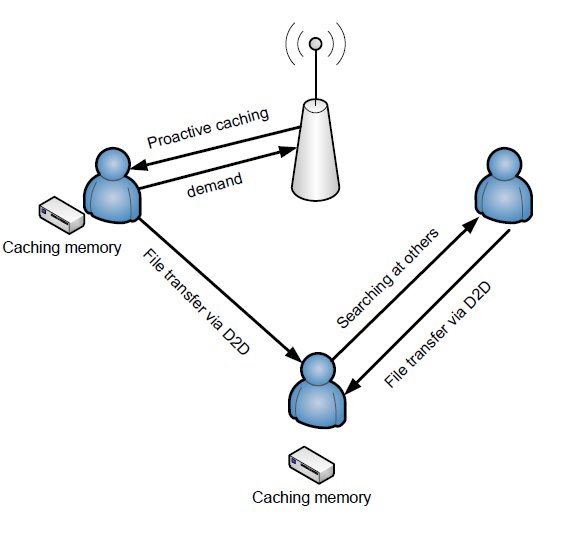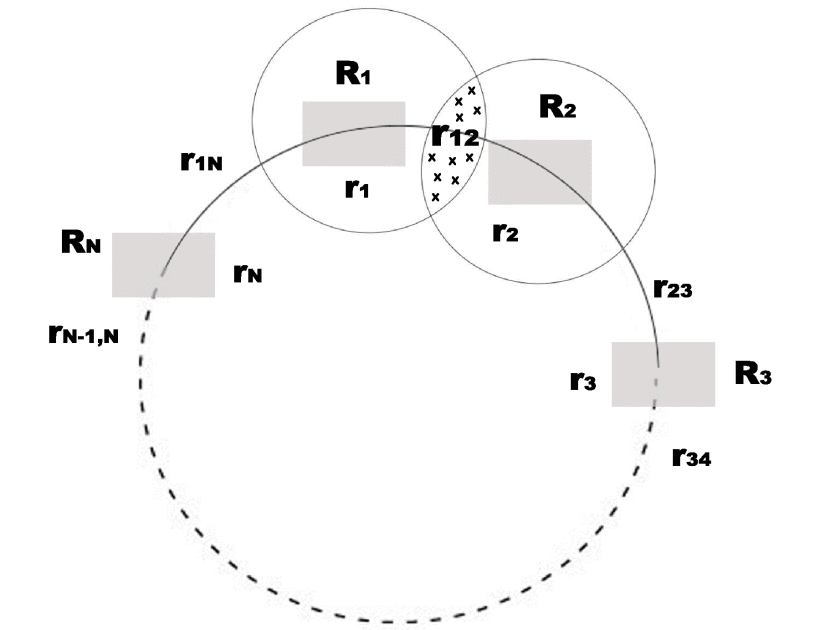Breadcrumb

Non-Orthogonal Multiple Access schemes in Wireless Powered Communication Networks
We characterize time and power allocations to optimize the sum-throughput of a Wireless Powered Communication Network (WPCN) with Non-Orthogonal Multiple Access (NOMA). In our setup, an Energy Rich (ER) source broadcasts wireless energy to several devices, which use it to simultaneously transmit data to an Access Point (AP) on the uplink. Differently from most prior works, in this paper we consider a generic scenario, in which the ER and AP do not coincide, i.e., are two separate entities. We study two NOMA decoding schemes, namely Low Complexity Decoding (LCD) and Successive Interference
Improved spectrum mobility using virtual reservation in collaborative cognitive radio networks
Cognitive radio technology would enable a set of secondary users (SU) to opportunistically use the spectrum licensed to a primary user (PU). On the appearance of this PU on a specific frequency band, any SU occupying this band should free it for PUs. Typically, SUs may collaborate to reduce the impact of cognitive users on the primary network and to improve the performance of the SUs. In this paper, we propose and analyze the performance of virtual reservation in collaborative cognitive networks. Virtual reservation is a novel link maintenance strategy that aims to maximize the throughput of

Content Delivery in Mobility-Aware D2D Caching Networks
The massive data exchange between base stations and network backhaul creates a strong overhead on mobile networks, especially at peak times. This motivates researchers to think about the proactive caching concept which depends mainly on caching some of the expected data items during off-peak times. The caching problem consists of two distinct phases, placement phase and delivery phase. In this work, we consider a mobility-aware device-to-device (D2D) caching network. We assume that data contents were already cached in users devices during the content placement phase and we focus on the content

Interference-based optimal power-efficient access scheme for cognitive radio networks
In this paper, we propose a new optimization-based access strategy of multi-packet reception (MPR) channel for multiple secondary users (SUs) accessing the primary user (PU) spectrum. We devise an analytical model that realizes the multi-packet access strategy of the SUs. All the network receiving nodes have MPR capability. We aim at maximizing the throughput of the individual SUs subject to the PU's queue stability. Moreover, we are interested in providing an energy-efficient cognitive scheme. Therefore, we include energy constraints on the PU and SU average transmitted energy to the

Towards Extended Bit Tracking for Scalable and Robust RFID Tag Identification Systems
The surge in demand for Internet of Things (IoT) systems and applications has motivated a paradigm shift in the development of viable radio frequency identification technology (RFID)-based solutions for ubiquitous real-Time monitoring and tracking. Bit tracking-based anti-collision algorithms have attracted considerable attention, recently, due to its positive impact on decreasing the identification time. We aim to extend bit tracking to work effectively over erroneous channels and scalable multi RFID readers systems. Towards this objective, we extend the bit tracking technique along two
Authentication over noisy channels
An authentication counterpart of Wyner's study of the wiretap channel is developed in this work. More specifically, message authentication over noisy channels is studied while impersonation and substitution attacks are investigated for both single- and multiple-message scenarios. For each scenario, information-theoretic lower and upper bounds on the opponent's success, or cheating, probability are derived. Remarkably, in both scenarios, the lower and upper bounds are shown to match, and hence, the fundamental limits on message authentication over noisy channels are fully characterized. The
Asymmetrical clipping optical filter bank multi-carrier modulation scheme
ARQ secrecy: From theory to practice
Inspired by our earlier work on Automatic Repeat reQuest (ARQ) secrecy, we propose a simple, yet efficient, security overlay protocol to existing 802.11 networks. Our work targets networks secured by theWired Equivalent Privacy (WEP) protocol because of its widespread use and vulnerability to a multitude of security threats. By exploiting the existing ARQ protocol in the 802.11 standard, our proposed opportunistic secrecy scheme is shown to defend against all known passive WEP attacks. Moreover, our implementation on the madwifi-ng driver is used to establish the achievability of a vanishing
ARQ secrecy over correlated fading channels
In this paper, we develop novel Automatic Repeat reQuest (ARQ) key sharing protocols for correlated fading channels. In particular, a novel role of "dumb antennas" in overcoming the negative impact of spatial correlation, on the achievable secrecy rates , is unveiled. We further develop an adaptive rate allocation policy which achieves higher secrecy rates by exploiting the channel temporal correlation. The performance gains offered by the proposed schemes are demonstrated by a comprehensive set of numerical results.
ARQ security in Wi-Fi and RFID networks
In this paper, we present two practical ARQ-Based security schemes for Wi-Fi and RFID networks. Our proposed schemes enhance the confidentiality and authenticity functions of these networks, respectively. Both schemes build on the same idea; by exploiting the statistical independence between the multipath fading experienced by the legitimate nodes and potential adversaries, secret keys are established and then are continuously updated. The continuous key update property of both schemes makes them capable of defending against all of the passive eavesdropping attacks and most of the currently
Pagination
- Previous page ‹‹
- Page 9
- Next page ››
